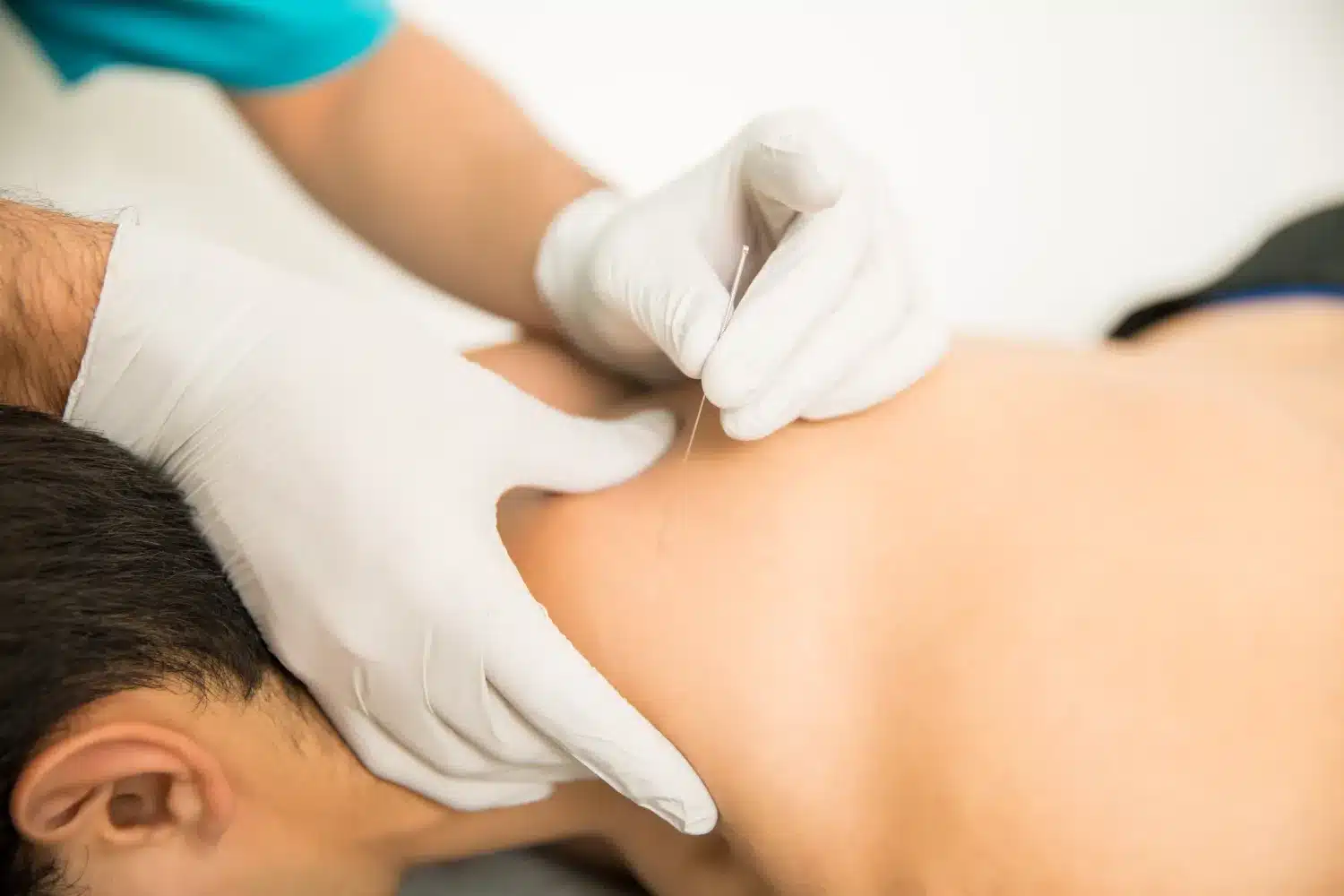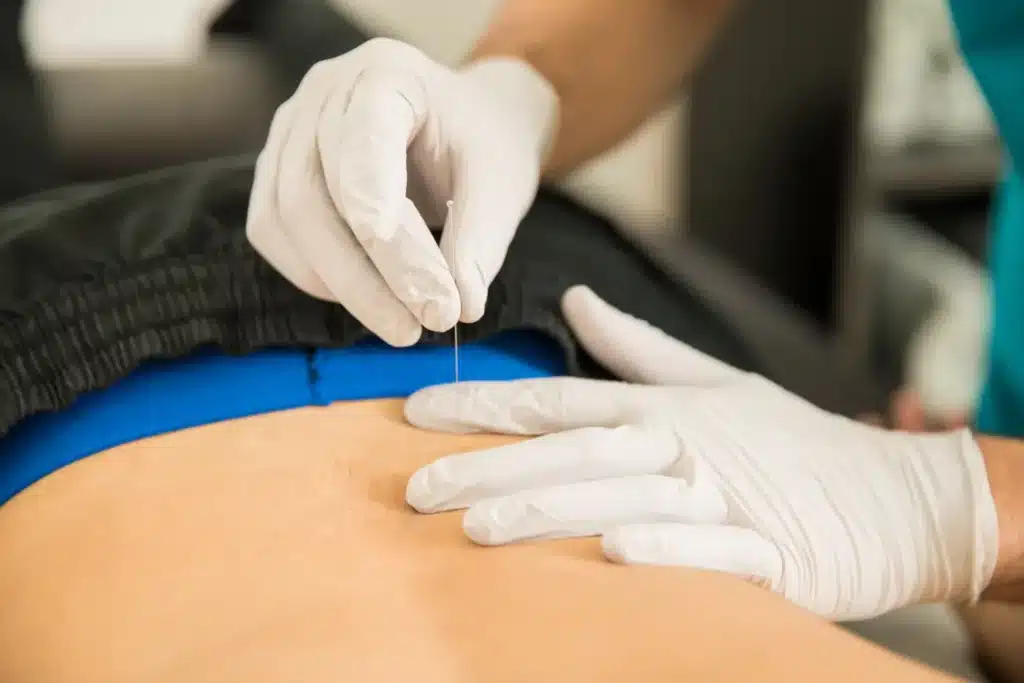
Often we treat pain without bothering with its definition. The majority of all pain patients recover quickly from their injuries; in fact, more than 90% will be fully functional within eight weeks simply because of the body’s ability to heal itself, regardless of treatment.
Are you suffering from chronic pain? If so, you’re not alone. Millions of people experience recurring pain and struggle to find relief. But there is hope! IMS (Intramuscular Stimulation) offers a safe and effective way to treat both acute and persistent musculoskeletal pains with long-lasting effects. In this blog post, we’ll discuss what IMS is, its various uses, and the available treatment options. Here’s a quick overview of what you can expect:
- What is IMS
- Benefits of IMS
- Conditions that IMS can treat effectively
If you’re ready to learn more about how IMS can help reduce your chronic pain, then keep reading!
What is Intramuscular Stimulation (IMS)?
Are you dealing with acute or chronic pain that just won’t go away? If so, you may be interested in Intramuscular Stimulation (IMS), a comprehensive system for the diagnosis and treatment of myofascial pain syndromes. IMS is an effective, non-invasive solution to all types of chronic musculoskeletal pain.
IMS is a form of dry needling therapy where an acupuncture-type needle is inserted into a muscle in a specific location, the goal of which is to locate and release areas of restricted muscle activity or tension, which can cause increased pressure or irritation on the nerves that feed into those muscles. By releasing these areas, it reduces nerve irritation and improves blood circulation in the affected area, resulting in reduced discomfort, better tissue nutrition, and improved movement.
IMS is offered by highly trained physiotherapists or physicians. A thorough assessment is performed to identify the source of pain and determine if IMS/dry needling is appropriate for the patient’s condition.
Many people have experienced successful results with Intramuscular Stimulation (IMS). It is important to note that IMS does not provide an instant fix, but it can help improve chronic pain over time. If you are interested in exploring IMS as a treatment option, speak to your healthcare provider to determine if it is the right choice for you. With the right care and an open mind, this system can help bring relief from both acute and chronic pain – allowing you to take back control of your life.
Benefits of IMS Treatment
The goal of IMS Treatment is to treat underlying neuropathic conditions that cause pain and can be incredibly effective when performed correctly – even for chronic back pain with root signs.
Here are just some of its benefits:
- It’s an effective form of treatment without relying on injections or drugs
- It works quickly, while still yielding long-term results
- It’s relatively affordable when compared with other treatments
- It helps manage chronic pain without relying on invasive techniques
- It’s safe and gentle enough for various age groups
- It can be used alongside other forms of treatment for managing chronic conditions
If you’re looking for a drug-free way to manage your existing chronic conditions or prevent future pain and discomfort, then IMS Treatment could be right for you – it offers significant relief with minimal risk!

Conditions that IMS can treat effectively
Fortunately, IMS dry needling is an effective treatment option that can help alleviate chronic pain caused by neuropathy along with a wide range of other conditions and injuries that are related to shortened muscles:
Neuropathic pain
This type of pain is related to irritation or inflammation of nerves, often those of the neck or low back, however the source of nerve problems is not always at the nerve root. An irritated nerve will cause all the muscles it innervates to contract slightly due to problems at the place where these nerves attach to the muscle (these are the normal places we target the needle to treat the muscle). The chronically tight muscle will have less blood flow, will fatigue faster, injure more easily and become susceptible to chronic pain conditions.
Carpal Tunnel Syndrome and other nerve entrapments
We include carpal tunnel syndrome here as one of many nerve entrapment syndromes. The carpal tunnel is located at the wrist and the classic case involves the release of these tissues at the wrist. IMS can help these types of conditions by releasing muscles that the nerve travels through. In this example of carpal tunnel syndrome, we can use the needle to release the forearm flexors and grip muscles of the forearm as well as the pronator teres muscle where the median nerve must travel through on its way to the wrist and hand.
Tendonitis and chronic tendon injuries
This treatment can treat the muscle which then relaxes the tendon to allow for greater healing potential as well as decreased risk of re-injury. We can also use this tool to reduce the muscle shortening of muscles in the same chain of tissues. Finally, we can treat shortened muscles at the level of nerve supply to the muscle-tendon unit, once again often getting to the heart of the cause of the tendonitis, improving treatment results and preventing re-injury.
Joint issues:
If tight muscles are crossing a joint then a number of negative things can happen. Of course, the muscles can and will fatigue faster leaving the joint more exposed to injury. Then tighter muscles will increase compression forces on the joint, which hastens wear and tear.
Migraines and tension-type headaches
These conditions can have many causative factors, one of which is tension in the muscles at the base of the skull. There are many nerves in this region of the body that refer pain into the head, jaw, and behind the eyes. Treatment of all muscles with the needle is not always possible for safety reasons however we can often release tension at the base of the skull and upper neck which in turn can have profound benefits to the migraineur or headache sufferer.
Whiplash
Many people involved in motor vehicle accidents, work and sports injuries causing whiplash will be referred for IMS therapy to release tight muscles in the neck. This is not a stand-alone therapy of course as we must consider many factors with whiplash as will all injuries. However, IMS/dry needling can be a very important piece of the treatment puzzle that exercise and deep tissue treatments are unable to provide.
Repetitive Strain Injuries
These injuries can be best treated with a combination of exercises and IMS/dry needling. As mentioned previously, chronically tight muscles are also weaker and more fatigued muscles that are predisposed to higher rates of injury. Furthermore, chronically tight muscles also have tendons that are in trouble and both these conditions can be effectively treated with IMS. Assuming that the nerve supply to the region of repetitive strain injury is also in trouble then we can apply the same treatment to the locations of the nerves as well.
This list is by no means exhaustive but it does provide an excellent starting point for a very large number of conditions that we see and treat on a daily basis using IMS/dry needling technique at Trimetrics Physiotherapy, Clinical Pilates and Complementary Health.
For those seeking relief from their nerve pain, here is an overview of what to expect:
- Nociception: This is the immediate response conveyed to the brain signalling tissue injury (noxious input). An example would be a slap to the skin.
- Inflammation: This type of pain is caused by a local response to cellular injury and it results in redness, swelling, heat, pain and sometimes loss of function. It is key in the process of eliminating noxious agents and healing.
- Neuropathy or Radiculopathic Pain: This is ongoing pain with no apparent sign, which comes from a malfunction in the peripheral nervous system resulting in supersensitivity in the sensory pain system. It is often mistaken as an issue with the central nervous system when it actually originates from problems in the PNS due to everyday wear and tear or overuse.
The good news is that medical professionals are now able to treat these categories of pain effectively through various techniques. Intramuscular Stimulation (IMS) has emerged as one of most successful therapies for chronic nerve-based pains as it helps restore proper nerve function while reducing sensitivity at source points that contribute to persistent aches and pains throughout your body.
IMS therapy also offers long-term relief with an extremely low risk of infection or further damage to your nerves or muscles that commonly occur with many drug therapies used for treating nerve-related pains.
For those living with chronic pain, IMS Therapy provides an effective alternative treatment option that focuses on restoring proper nerve functioning rather than masking symptoms like many medications do. By understanding each condition better, patients are able to make informed decisions about treatments and ultimately regain control over their lives.
Start Your Recovery
IMS Therapy is an effective and safe treatment for those living with pain due to shortened muscles. This form of therapy is recommended by many physicians for a wide range of conditions that relate to shortened muscles:
With the right care and an open mind, this system can help bring much-needed relief from chronic pain – so why not give it a try? Reach out to us at Trimetrics today if you have questions about how IMS Therapy could work for you!

